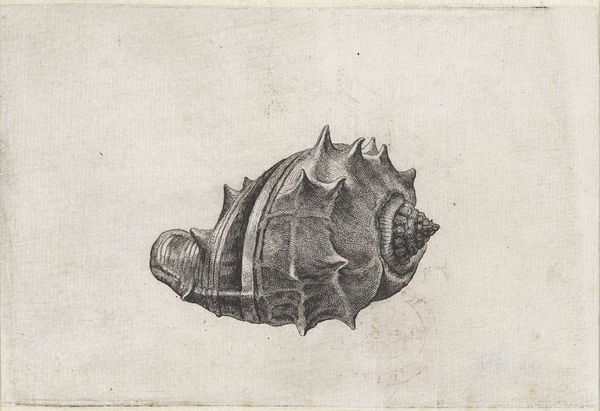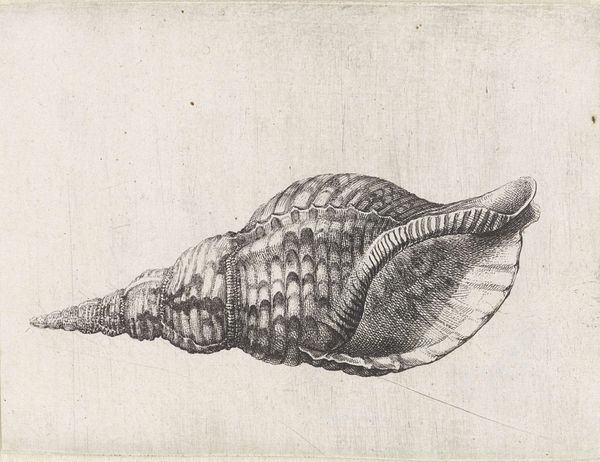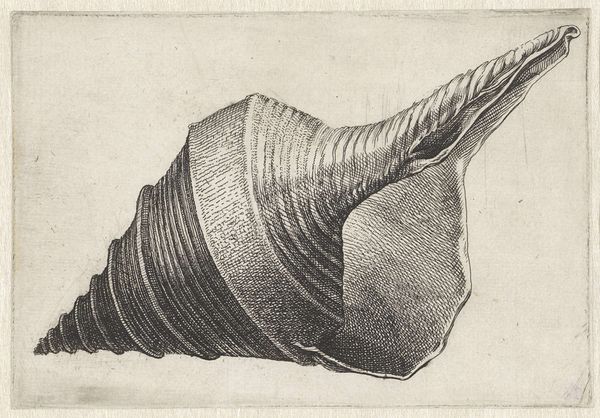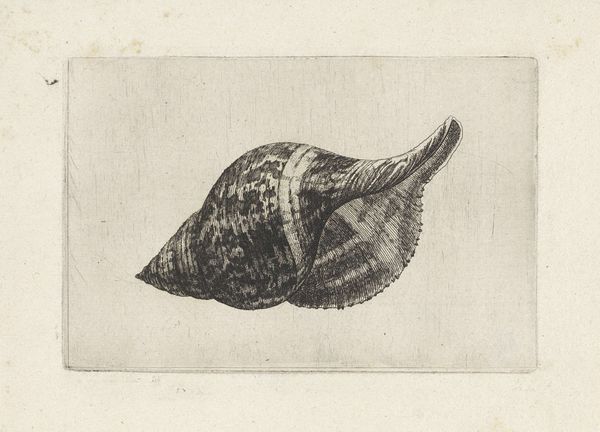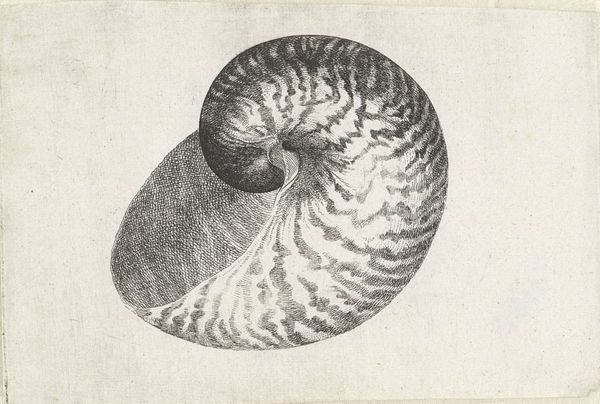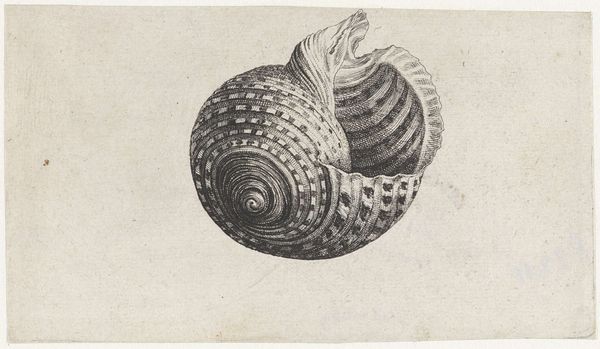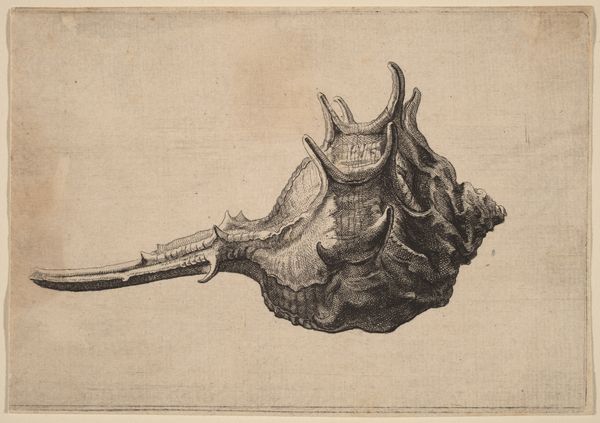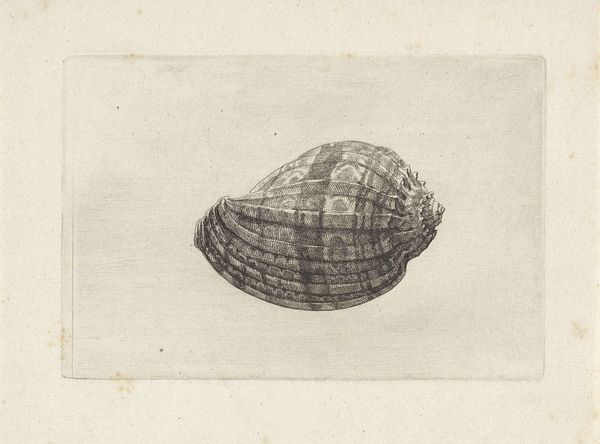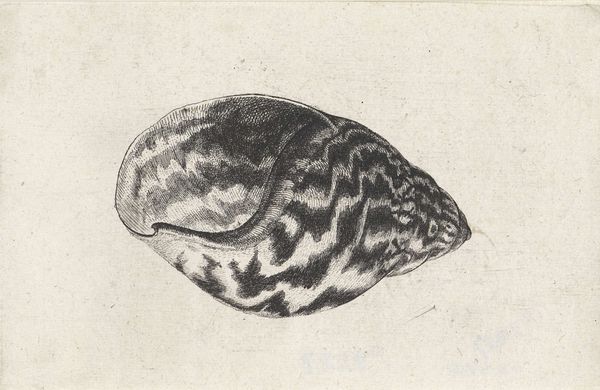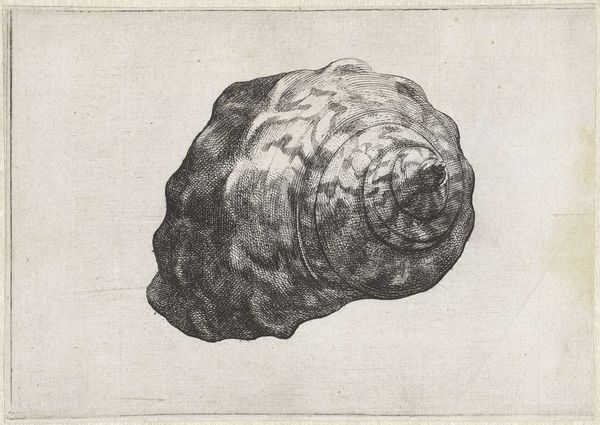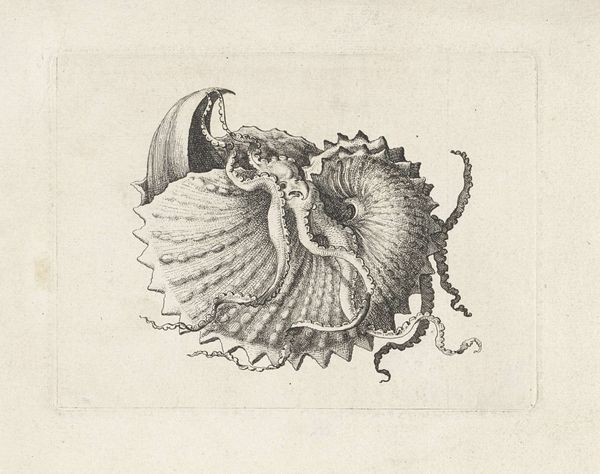
print, engraving
#
pencil drawn
#
baroque
# print
#
pencil sketch
#
old engraving style
#
pencil drawing
#
engraving
Dimensions: height 95 mm, width 144 mm
Copyright: Rijks Museum: Open Domain
Curator: Let’s turn our attention to this engraving titled "Schelp, cassis cornuta" created sometime between 1644 and 1652 by Wenceslaus Hollar. Editor: Wow, even in this tiny black and white engraving, it feels weighty, doesn't it? There's this sense of the ocean’s depth just packed into this little shell. It’s like holding the entire sea in your hand… if the sea were grayscale, that is. Curator: Precisely. The artist’s rendering highlights not just the shell’s external structure, but the socio-economic contexts linked to these types of natural specimens in seventeenth-century Europe. These objects of natural wonder were very collected and displayed, sometimes forcefully extracted from their original inhabitants and ecosystems. How might Hollar's seemingly simple representation also embody a complex narrative of global exchange and colonial acquisition? Editor: That's heavy, for a shell! You know, I was just vibing with its texture— the meticulous lines mimic the rugged surface. It’s so tactile, I can almost feel the ridges and bumps, and imagine the slow crawl of some sea creature making its home inside… Maybe this connects to your point— thinking about what ‘home’ really means, who gets to have one, what gets left behind. Curator: Absolutely, considering this, it’s worth mentioning that “shells” are linked in various disciplines with sexuality and femininity—often intertwined within oppressive regimes that regulate gendered and racialized bodies. When viewing Hollar's artwork through this lens, one might question and unravel historical constructions imposed onto seemingly benign subjects, as these types of power dynamics shaped what stories were validated in Europe in the 17th Century, whose knowledge mattered, and, ultimately, whose realities and existences became marginalized and were actively erased. Editor: See, I learn something new every day. I was just seeing a shell, now I am seeing like… the universe in a seashell. Sort of humbling to think a little sketch could hold all that. Curator: Indeed, that’s the potent magic that lies within studying and contextualizing art; art gives way to seeing through multiple perspectives while understanding the narratives behind those views. Editor: Well, now I'm going to go find a seashell and have a good long think about all of this. Thanks!
Comments
No comments
Be the first to comment and join the conversation on the ultimate creative platform.

